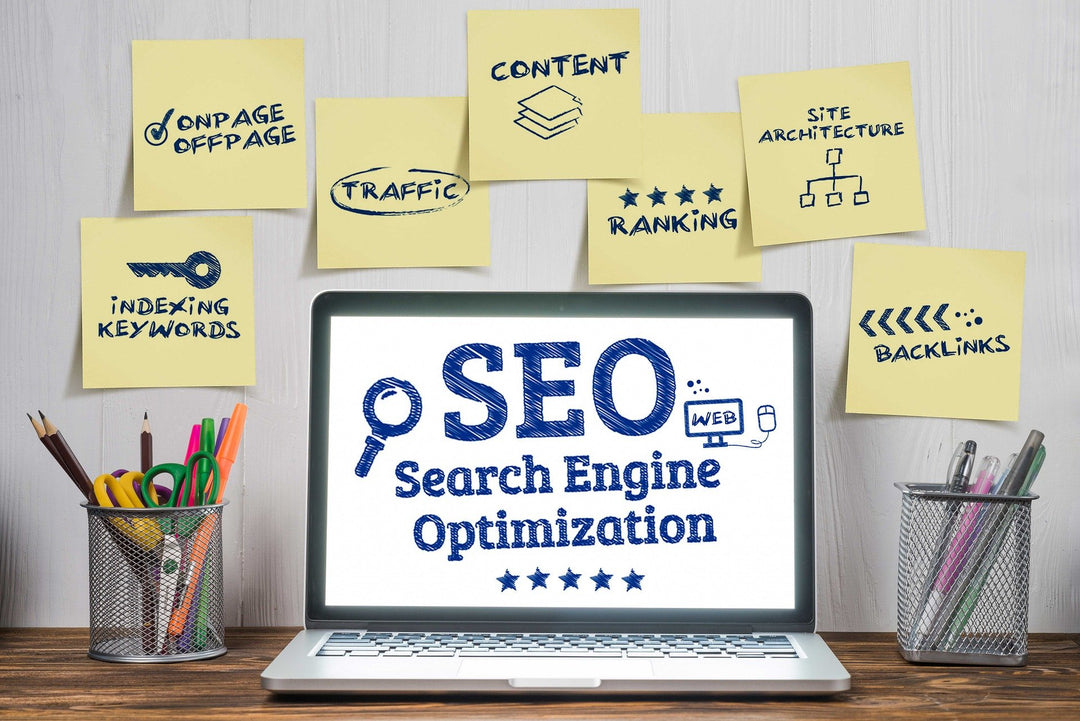Top-Notch Tips to Optimize Your Shopify Site for Google in 2022
Are you running a Shopify store? Kudos! You have selected an eCommerce platform that has the most popular eCommerce subscription. However, is running an eCommerce store all about choosing the right platform?
Definitely not! Building your store on Shopify doesn't help you increase sales and conversion. Shopify helps eCommerce retailers sell their products and services online. For that, you need robust search engine optimization strategies.

It's vital to optimize your Shopify store for Google, Bing, and other search engines so that potential customers can find it.
Many search engine optimization (SEO) principles are built on giving consumers a compelling experience.
People are more inclined to shop with you if your Shopify store is easy to locate and browse.
Here is a short Shopify SEO guide you must read to get traffic and sales to your store
Shopify Basics - Understanding Built-In SEO Features
Shopify online stores have built-in SEO features that help to improve your search engine ranking. It comes with a number of built-in tools and apps that help your page be indexed and ranked in search engines. It's also possibly the most SEO-friendly eCommerce platform ever.
Here are some of the SEO basics that are available on the Shopify platform:
1. Shopify Page Editor
Shopify's content management system (CMS) provides a page editor with a simple user interface. Basic formatting settings, headers, tables, and HTML editing are all available in the page editor. You may also use the sites to post photographs and videos.
Based on the content you submit in the page details area, the search engine listing preview section automatically produces a page title and meta description. The title of a page is a significant ranking element. They convey information about the contents of your website to search engines, and they frequently appear as the headline for your search result.

2. Image Optimization
Image optimization is important in e-commerce businesses since they often include a lot of product photographs. Shopify's SEO helps you add high-quality compelling images to your site. Moreover, Alt text can be inserted from your Shopify admin by going to the chosen product details page and choosing the media item.
3. Sitemap
A sitemap is a file that contains information about your site's pages, videos, and other material, as well as the hierarchical links that exist between them. Your Shopify sitemap file is produced automatically by the platform, so you don't have to do anything more. Separate sitemaps for your items, collections, blogs, and web pages are linked in this file. When you upload a new webpage, product, collection, picture, or blog post to your Shopify online store, it's instantly updated.
4. Analytics
Google Search Console and Google Analytics are both free tools that are compatible with Shopify sites. Google Search Console is a tool that allows site owners to track and troubleshoot their site's appearance in Google search results. Google Analytics tells you how visitors got to your site and what they did once they were there.

5. Product Tag
Because many eCommerce sites sell a wide range of products, each variant of a certain product category may necessitate the categorization of products to help consumers navigate things more efficiently. Tags may be used to classify and categorize items as well as to allow users to filter products on your collection pages using tags.
It's a fact that Shopify comes with a number of SEO-friendly features, but there's still a lot more you can do to improve your search engine results. While SEO relies on keywords, it takes more than just sprinkling some keywords into your site’s content to get your site ranking higher.
Want to get more tricks to optimize SEO for your Shopify sites?
Here are some of the top strategies to improving Shopify SEO :
1. Relevant Keywords should be targeted
Begin by targeting relevant keywords on Shopify to increase SEO. The position of your website in search results is determined by keywords. Use high-value keywords to optimize product pages. Don't employ too many keywords, as this can result in keyword stuffing and a drop in your ranking.

Keywords should be used in title tags, meta descriptions, and headers to rank in search results. Keywords placed in these high-value locations can help you rank higher for those keywords.
To appear in the proper search results and attract interested traffic, you must optimise your site for relevant key phrases.
Here's how to do it:
Undertake keyword research:
You must conduct keyword research to uncover relevant keywords. To locate the perfect phrases for your Shopify store, you may utilise keyword research tools like KeywordsFX, Ahrefs, SEMRush, and Google Keyword Planner.
Include Long-Tail Keywords:
Long-tail keywords are those that have three or more words. These keywords are better for your site since they are more particular, allowing you to better understand the user's search intent and determine whether or not they are interested in your items.
2. Optimize Page Speed for Better User Experience
Every year, sluggish websites cost $2.6 billion in sales. To retain leads on your page and learn about your offerings, user experience is crucial. Bounce rates get higher and search engine rankings reduce when your site provides a bad user experience.
Examine the applications you're using on your Shopify store to see if they're necessary to optimise site load time. If they aren't required, remove them from your site to help it load faster.
You can also use additional page performance optimization techniques, such as:
- Redirects are reduced.
- Image size-reduction
- Making use of browser caching
- JavaScript Minimization
- CSS minification
3. Use CTA buttons to Provide Seamless Navigation
The usage of CTA buttons is the next Shopify SEO tip on our list. CTA buttons are important since they direct your viewers to take the next action. You need to design CTAs that stand out, whether it's to visit a specific product page or to add your goods to their basket.
4. Optimize Your Product Pages for Relevant Searches

Your sales can explode if your product pages rank on the first page of SERPs. To develop search-friendly product pages, keep the following principles in mind:
- Use headers, subheadings, and bullets to create a clear framework that will make it simpler for visitors to browse through.
- Don't create sloppy product copies; instead, embrace your brand's distinct tone and make it short and sweet.
- Accentuate your unique value proposition - what are the benefits and characteristics of utilising your product or brand that buyers won't find anywhere else?
- Get rid of the jargon and develop information that is easy to read with short words and paragraphs.
- Optimize for long-tail and head keywords, but don't just stuff them in for the sake of ranking. The importance of readability cannot be overstated.
5. Add External & Internal Links to Your Store
Search engines utilise backlinks to measure how well your site is regarded by the general public. Consider it SEO's version of word-of-mouth. It's an off-page SEO technique that focuses on establishing your credibility and reliability.
- If you sell items created or supplied by well-known firms, they may have a policy that only approved sellers are given a connection. Send them an email to see if they'll connect to your shop.
- To develop both links and content, reach out to industry leaders and influencers for interviews.
- Look for broken links to items and services that are comparable to yours. Once you've found one, contact the owner of the site that contains the broken link and request that they link to your site instead. Because broken links are detrimental to SEO, this is a win-win situation for both parties: they get to fix a broken link, and you gain a link.
6. Use Responsive Design

Your Shopify store will look fantastic on any platform, including desktops, tablets, and smartphones if you integrate a responsive design. Responsive themes may substantially enhance the user experience and retain people on your site for longer periods. Because Google uses time-on-page to determine a site's worth, having a site that is simple to navigate and read can help you rank higher. As a result of enhanced rankings and usability, visitors return and conversions grow. For an e-commerce site, this is fantastic. It's critical to ensure that your store is mobile-friendly, as buyers increasingly use their smartphones to make purchases.
7. Integrate Best Shopify SEO Apps and Tools
Choosing the correct theme for Shopify SEO is the first step to optimizing your eCommerce website. However, one of the things you should never miss is integrating tools and software.
Many SEO applications may function as an extension of your team, increasing your talents and capacity for optimization, whether you're a newbie or a seasoned pro. It helps to achieve:
- Better site speed and user experience.
- Enhanced visibility/ranking.
- Simplified web coding.
- High-quality visual resources
- Top-notch SEO capabilities
Here are a few that you should be aware of:
Plugin SEO- provides an all-in-one solution for organising all of your SEO improvements, tracking search rankings, and implementing suitable suggestions to attract more relevant traffic to your website.
Tiny IMG SEO Picture Optimizer- Tiny IMG will aid in the reduction of image load times, which will improve the overall performance of your site.
Schema Plus for SEO- Schema Plus for SEO provides sophisticated markup code that aids in search engine optimization.
SEO HTML Sitemap- Creates an HTML sitemap that updates every hour. This means as you update the product or content, your sitemap will reflect the changes.
Relevant Reading: SHOPIFY FOR THE FUTURE: TRANSFORM YOUR ECOMMERCE STORE
Power Your Shopify With the Right SEO Metrics
Every eCommerce retailer needs a custom website that articulates your business. Shopify makes selling products online as easy as possible. While a lot of the hard work is being done for you, there are some SEO efforts you need to make to ensure sky-rocketing profits. At eComIntegrate, we create the best Shopify websites that promise results. To know more about our Shopify optimization and other related digital marketing services, drop us a line below.
[nerdy-form:11564]





Leave a comment